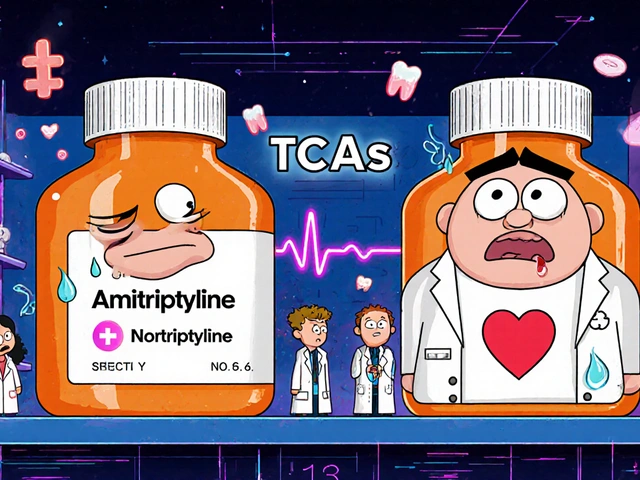Schizophrenia Treatment: Proven Options, Practical Tips, and Latest Insights
When dealing with schizophrenia treatment, the set of medical and therapeutic actions aimed at reducing psychotic symptoms, improving daily function, and preventing relapse. Also known as schizophrenia care, it blends drugs, counseling, and community supports. Schizophrenia treatment isn’t one‑size‑fits‑all; it adapts to the person’s age, symptom profile, and life goals. Below we break down the main pieces you’ll encounter, so you can see how they fit together.
The backbone of most plans is antipsychotic medication, drugs that block dopamine receptors to calm hallucinations, delusions, and thought disorder. First‑generation agents like haloperidol work fast but can cause stiffness, while second‑generation options such as risperidone, olanzapine, and aripiprazole tend to have milder movement side‑effects but may raise weight or blood sugar. Choosing the right pill involves weighing efficacy against side‑effects, testing doses, and monitoring labs. In practice, a good psychiatrist will start low, go slow, and adjust based on how you feel.
Medication alone rarely restores full function, which is why cognitive behavioral therapy, a structured talk‑based approach that helps patients recognize and challenge distorted thoughts is a key add‑on. CBT for psychosis teaches you to ask, “Is this thought based on evidence?” and to develop coping tricks for auditory hallucinations. Research shows that when CBT is combined with meds, relapse rates drop and quality of life climbs. The therapy typically runs for 12‑20 weekly sessions, each focused on skill‑building rather than just venting.
Another pillar is psychosocial rehabilitation, community‑based programs that teach daily‑living skills, job training, and social interaction strategies. These services fill the gap between hospital discharge and independent living. Think of a supported‑employment coach who helps you practice interview skills, or a peer‑run group where you share coping tricks. By improving social functioning, psychosocial rehab reduces isolation—a major relapse trigger. It also gives patients a sense of purpose, which feeds back into medication adherence.
Speaking of adherence, staying on the prescribed regimen is often the toughest hurdle. Forgetting a dose, fearing side‑effects, or feeling “cured” can all lead to missed pills. Simple tools—pillboxes, phone reminders, and blister packs—can make a huge difference. Some clinicians use long‑acting injectable antipsychotics, which turn a daily habit into a monthly visit. Studies show that patients on injectable forms miss far fewer doses and enjoy more stable symptom control.
Early intervention matters, too. When symptoms are caught within the first two years, the brain’s response to treatment is stronger, and long‑term disability can be limited. Programs like early‑psychosis clinics provide rapid assessment, low‑dose medication, and intensive therapy right at the start. They also involve families, teaching them how to support medication routines and recognize warning signs.
Personalized care is the buzzword driving new research. Genetic testing, for example, can hint at which antipsychotic will work best and which side‑effects you might face. Brain‑imaging studies are exploring biomarkers that predict response to CBT versus medication alone. While these tools aren’t mainstream yet, they signal a shift from “trial‑and‑error” to data‑guided choices.
Community resources round out the picture. Peer‑support groups, online forums, and advocacy organizations offer education, stigma‑reduction, and legal help. Knowing your rights at work or school can prevent discrimination and keep you productive. Moreover, lifestyle tweaks—regular exercise, balanced diet, and adequate sleep—can blunt medication‑induced weight gain and improve mood.
Key Components of Effective Management
To summarize, schizophrenia treatment encompasses medication management, psychotherapy, skill‑building programs, and supportive community networks. It requires coordination among psychiatrists, therapists, social workers, and family members. By aligning these elements—antipsychotic medication, CBT, psychosocial rehab, adherence tools, and early‑intervention services—you create a safety net that catches symptoms before they spiral. Below you’ll find articles that dive deeper into each of these areas, offering practical tips, evidence‑based comparisons, and real‑world stories to help you navigate the journey ahead.

Clozapine vs Alternatives: Efficacy, Side Effects, and Choosing the Right Antipsychotic
A thorough comparison of Clozapine with common antipsychotic alternatives, covering efficacy, side effects, monitoring, and how to choose the right medication.




